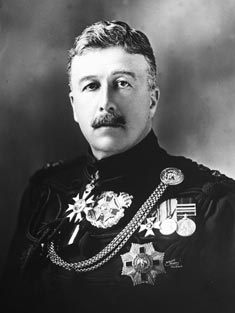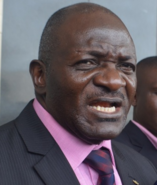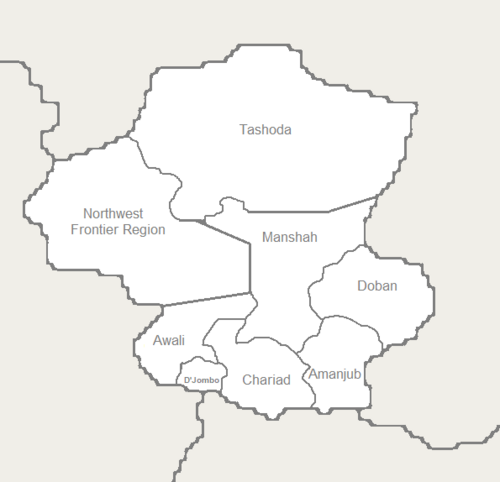Bamvango
Republic of Bamvango جمهوری باموانگو Jomhuri-ye Bamwanguw | |
|---|---|
| Motto: Justice, Freedom, Equality عدالت ، آزادی ، برابری 'Edalet , azada , berabera | |
| Anthem: Arise, patriots میهن پرستان برخاست Mahen perestan berkhaset | |
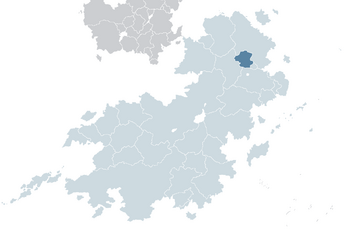 Location of Bamvango in Coius | |
| Capital and largest city | D'jombo |
| Official languages | Estmerish, Pardarian |
| Ethnic groups (2017) | 22.4% Horo 20.6% Welke 15.4% Kamba 12.7% Ilangi 11.1% Begi 17.8% other |
| Demonym(s) | Bamvangan |
| Government | Unitary parliamentary republic |
| Anthony Benoudjita | |
| Mosaab Arman | |
| Legislature | Parliamentary Assembly |
| Independence from Estmere | |
• Declared | 1946 |
| Population | |
• 2020 estimate | 12,675,299 |
• 2011 census | 9,458,895 |
| GDP (PPP) | estimate |
• Total | €17,415 million |
• Per capita | €1,374 |
| GDP (nominal) | estimate |
• Total | €7,440 million |
• Per capita | €587 |
| Gini | 40.6 medium |
| HDI | 0.42 low |
| Currency | Bamvangan Shilling (BVS) |
| Date format | dd-mm-yy |
| Driving side | left |
| Calling code | +64 |
| ISO 3166 code | BV |
| Internet TLD | .bv |
The Republic of Bamvango is a landlocked country located in west Bahia bordered by Yemet to the south, Behera to the west and The Magadi to the east. It lies near to Rahelia and possesses a varied but generally a modified equatorial climate. Its capital D'jombo has traditionally been at the crossroads of various empires and civilisations from Rahelia and Bahia.
Bamvango is named for the river that runs through the country which traditionally has supported civilisation in the area. Bamvango was an early centre of human civilisation populated by Gondiatic peoples since the third millennium. The majority of northern Bamvango was ruled by the Muharamite Confederation and later the Amassinids whilst the south of the country was ruled by the Mansharite Kingdom, which would expand into the northeast. During this period the region would be a centre for the slave trade in west Bahia as well as mostly converting to Irfan through trade links with Rahelia. The region became a backwater when the majority of the south became client states to the Kamwengan Empire in modern day Yemet.
The region was colonised by Estmere in the 1890's as the colony of South Manshara but was substantially underdeveloped. Independence was gained in 1946 following the Fort Henderson declaration, but the nation soon fell into political instability. The 1977-1985 rule of general Kashim Shehu was considered to be one of the most violent in Bahia triggering the Bamvangan Bush War and a decade of political instability and ethnic violence. From 1987 to 2014 the country was ruled by Abdallah Yaya Ibrahim who was ousted following the start of the Bamvangan insurgency which continues to this day.
Despite social indicators improving over the 2000's the start of the insurgency in 2011 has led to a reversal of many of these gains. Bamvango remains one of the poorest countries in the world being largely reliant on foreign aid from the Euclean Community, Zorasan, Shangea and Senria. The government struggles to control the majority of the country due to the ongoing insurgency.
The country is incredibly ethnically diverse with over 50 ethnic groups. The main groups are Welke, Horo, Kamba, Ilangi and Begi peoples. The lingua franca's of Bamvango are Estmerish and Pardarian although many other languages are spoken. Bamvango is a major exporter of uranium, oil and gold alongside the traditional cotton growing industry. It is a member of the Community of Nations, ITO, ICD, CBS, IFDS and the ICC.
History
Prehistory
The territory of modern day Bamvango is believed to be one of the earliest places homosapiens inhabited in the area around modern D'jombo near Yemet. A human skull dating back to the middle Stone Age was discovered in 1999 that constitutes one of the earliest instances of modern anatomically correct human habitation in the region. The Coian population entered the region in the neolithic period migrating from the Gonda river.
During the prehistoric period the land in northern Bamvango was much wetter then in the modern period making it ideal conditions from human habitation. The Doa valley contains numerous rock paintings indicating larger fauna inhabited the region then in contemporary times with some paintings dating back to the 7th millennium. It has been theorised that Gondiatic peoples who make the majority of the population of modern day Bamvango entered the region by the 3rd millennium based on archaeology pointing to the emergence of their distinctive domed-shaped huts in that period. The majority of these early centres of human habitation were predominantly hunter-gatherer societies with scrapers, chisels and arrowheads from between 15,000 BCE to 6,000 BCE being found in the country in 1974.
Precolonial history
Antiquity
Medieval period
Colonial period
Colonialisation
Estmerish rule
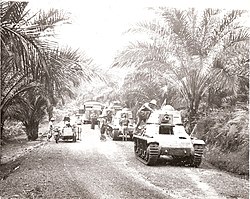
Independence
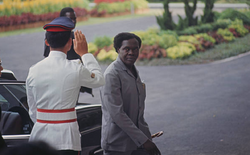
Modern history
Early period
Shehu regime and Bush War
In 1977 after facing strikes and social unrest the embattled government of Joshua Ngakoutou was ousted by colonel Kashim Shehu with the coup mostly being supported by junior officers. Shehu's coup was a surprise abroad as he was not considered to be particularly partisan officer and the military was generally seen as loyal to Ngakoutou. However it was later remarked that the military had become increasingly radicalised by young officers that a more decisive government in the country was needed and continued lack of foreign support for Ngakoutou meant their support was assured. Shortly after ascending to power Shehu held a referendum which saw voters approve by 87% to suspend the constitution and allow Shehu to govern as Supreme Commander through the Security Commission until the nation was deemed to be "stabilised".
After confirming supreme executive power Shehu went onto form one of the most brutal governments in Bahia. He formed a private paramilitary force, the National Youth Brigade, that became known for their practice of mutilating the regimes political opponents with meathooks. All newspapers were shut down, protests and strikes were banned and universities closed. Dissidents were often taken off the streets by being stuffed into car boots to be tortured and killed. The most famous act of brutality Shehu ordered was the shooting of dissidents at the D'jombo Football Stadium when 312 leftist activists where massacred by Shehu's men whilst the pop song Dancin' for my life was played from loudspeakers. Shehu's government used these often extravagant acts of repression in order to meet the dictators own flamboyant style. The regime justified this mass repression as "cleaning Bamvango of social parasites and anti-patriotic elements" and that a period of "readjustment" was needed for the nation to modernise.
Economically the government originally led a moderate economically liberal course under the influence of technocratic Finance Minister Herbert Koulamallah with the economy steadily improving between 1977-9 due to an austerity programme and tough action on inflation. However Koulamallah was dismissed by Shehu in 1979 who subsequently took a much more dominating role in economic affairs. Shehu used the state treasury to create a complex system of patronage and corruption whilst spending millions on expensive infrastructure projects as well as constructing his own personal palace. Embezzlement became the standard for all officials as Shehu cultivated an increasingly bizarre cult of personality which saw himself renamed as the "Eternal Father of the Bamvangan People" with his portrait being required to adorn all public buildings.
The worldwide effects of the 1980 recession wreaked havoc on Bamvango's whose exported-orientated economy plunged into recession. Shehu continued to spend extravagantly even as the country struggled with grinding poverty and persistent food shortages. In order to shore up support for his regime Shehu began concentrating power solely in southwest ethnic groups most notably his own Kamba group, the third largest in the country. In 1980 Shehu was increasingly ordering the deployment of the National Youth Brigades to seize land from Horo and Welke people to be given to his cronies. These land policies often resulted in massacres of Horo's and Welke's which in turn led to the creation of anti-Kamba brigades amongst these groups that opposed the Shehu government and its Kamba favouritism. In 1982 some of these groups merged to form the Bamvangan People's Revolutionary Organisation (BPRO) which explicitly advocated for the overthrow of the Shehu regime which began the Bamvangan Bush War.
The Bamvangan army had under Shehu been purged of much of its personnel with a core of Kamba officers serving as the main bases of support for the Shehu regime. The National Youth Brigades also were vital in shoring up the regime's support which was concentrated in the southwest of the country. However the Shehu regime had scant foreign support whilst the BPRO received significant support from Zorasan. Although the conventional arms of the Shehu government meant it was able to control the country's major cities it had little support from the countryside.
Shehu's increasingly genocidal tactics towards the BPRO and his general notoriety, incompetence and erratic behaviour resulted in a collapse of his men's morale even amongst his Kamba support base. In 1985 Estmere's Prime Minister Robert Reynolds coming under domestic pressure to improve the humanitarian situation in Bamvango approved of Operation Fair Game which saw a detachment of Estmerish paratroopers backed by Shehu's own bodyguards capture and execute the dictator. A provisional military junta under general David Oumarou was formed shortly after Shehu's death. The new junta upon coming to power repudiated the Shehu regime dismantling his cult of personality, disbanding the National Youth Brigade, giving amnesty to and releasing thousands of political dissidents and repealed restrictions on free speech. However Oumarou as an ethnic Kamba still could only count on narrow support from Kamba people and failed to seriously stem the fighting.
In 1987 the capital of D'jombo fell to BPRO forces led by colonel Abdallah Yaya Ibrahim, an ethnic Begi who declared himself president as Oumarou fled the country. However regime loyalists continued to wrack the country with instability whilst Ibrahim's government - a broad coalition of ethnic groups and ideological rivals whose only uniting factor was their opposition to Shehu - was not recognised by outside powers. Ibrahim opened a new dialogue with the loyalist groups on ending the civil war by promising a system of power sharing between the presidency and two vice-presidents who would represent different ethnic and religious groups. This led to the Port Fitzhubert Accords which formally ended the Bush War in 1989 after a decade of warfare and the deaths of thousands of people. Elections were held in 1991 which saw Ibrahim and the BPRO now transformed into a political party named the Bamvangan Popular Renewal Organisation win in a landslide.
Ibrahim regime

Upon the conclusion of the civil war and the election of the BPRO Ibrahim focused on rebuilding the country from the destruction of the civil war. Although Zorasan had been a major supporter of the BPRO during the bush war Ibrahim branched Bamvango's foreign policy out to court both the country's traditional benefactor Estmere as well as Senria and other members of the Euclean Community allowing massive amounts of foreign aid into the country to help develop it. Bamvango subsequently joined both the International Council for Democracy and the International Forum for Developing States as Ibrahim sought a balanced foreign policy. The 1990's saw improving indicators of life expectancy and education as economic growth stabilised for the first time in several decades in the country. Ibrahim was easily re-elected to a second five year term in 1996 when the BPRO won another landslide electoral victory.
In Ibrahim's second term however tensions increased due to increased oil exploitation and a poor relationship with Bamvango's neighbour Yemet. In 1999 an attempted coup occurred; although it is disputed as to who performed the coup with some alleging a false flag operation Ibrahim blamed former Shehu loyalists and began to implement more repressive policies. In 2000 he announced that he would be amending the constitution to eliminate term limits; this action resulted in massive protests around the country especially from Horo people who felt discriminated against by the central government. Repressive actions by Ibrahim in response to these protests led to Bamvango to be suspended from the ICD.
Although the 2000's saw high economic growth in the country due to increased uranium, oil and gold exports very little of this growth affected the population. Ibrahim's regime used familiar tactics of ethnic favouritism, patronage and embezzlement to enrich himself and his cronies whilst being supported by foreign powers - primarily Estmere, Senria and Zorasan - due to being seen as a bedrock of stability in the region. Ibrahim would win the 2001 and 2006 elections under allegations of electoral fraud and vote rigging.
In 2011 prior to elections that year a military munity by Welke leader Oscar Kuol Arop resulted in a large section of the military to break away from the government forming the Patriotic Front for the Liberation of Bamvango (PFLB) that sought to overthrow the Bamvangan government. This started the Bamvangan Insurgency which saw numerous rebels groups, predominantly from the east of the country, fight against the central government.
In 2014 Senria, Estmere and Zorasan demanded that Ibrahim leave office after his government had been shown to be unable to contain increasing ethnic violence. With internal and external support for his government non-existent Ibrahim fled the country causing the situation to collapse into chaos as the central government became totally impotent in the face of massive ethnic violence. The PFLB quickly formed a provisional government under Kuol Arop who became interim president a day after Ibrahim went into exile stating that his presidency was no longer valid. Although the PFLB had occupied the capital it was opposed by Ibrahim loyalists who formed the Bamvangan Revolutionary Army (BRA) that soon fought the new government.
Renewed conflict
Following the flight of Ibrahim a transitional government was set up that promulgated a revised constitution and set elections for October 2014. The elections were won by former diplomat Anthony Benoudjita's whose Democratic Rainbow Alliance promised an end to the violence and the restoration of the democratic process. Benoudjita attempted to integrate the PFLB into the military but was hamstrung by increasing violence by the BRA. In 2017 Kuol Arop - then vice-president - left the government to restart the civil war although large sections of the PFLB continued to support the government.
Although violence since 2014 has been less dramatic then it was from 2010-2014 the country remains unstable as both the BRA and PFLB continue to threaten the central government. Around 2 million people have been displaced because of the conflict and living standards have collapsed.
Government and Politics
Constitutionally since 2014 Bamvango has been a parliamentary constitutional republic with a representative democracy. The President of Bamvango is the head of state and government that is responsbile to the legislature similar to the Etrurian and Senrian systems. The government is comprised of senior ministers and junior ministers; the senior ministers comprise of the Council of Ministers. The unicameral legislature is the Parliamentary Assembly which is elected every five years using an additional members system. Bamvango uses a system of civil law with a four tier judiciary, with the Constitution of Bamvango serving as the supreme law in the country. Bamvango is divided into eight provinces which theoretically possess a high degree of autonomy.
The current president is Anthony Benoudjita who represents the centre-left Union of Progress and Development (UPD). Benoudjita was first elected president in 2014 and was re-elected to a second term in 2019. Benoudjita is the third president to hail from the Horo people and the first since the ousting of Joshua Ngakoutou in 1977. The current vice-president is Mosaab Arman who is a member of the Patriotic Front-Arman (PF-A). Both the UPD and PF-A are members of the Democratic Rainbow Alliance (DRA) a broad coalition of parties in the Parliamentary Assembly.
Foreign relations
Administrative divisions
Military and intelligence services
The armed forces of Bamvango are named the Bamvangan Security Forces (BSF) formed in 2014 after the National Transitional Council merged the fighters from the Patriotic Front with remnants of the former Bamvangan Revolutionary Army into a new armed force. The BSF currently consists of three branches - the Bamvangan Ground Force (BGF), Bamvangan Air Force (BAF) and the Republican Guard (RG), an elite unit primarily tasked with protecting the central government. The BSF numbers 150,000 troops on paper with Bamvango having one of the highest GDP-to-military spending ratios on the planet.
As well as the BSF the Bamvangan government relies on allied militia forces to aid it in the ongoing Bamvangan insurgency. The paramilitary National Guard was created in 2018 although is not considered ready for major combat operations. The Northwestern Alliance, a military group numbering 10,000 men under the command of warlord Aboubakar Hassaballah, is considered amongst the most effective of pro-government forces in the country despite being technically required to merge into the regular BSF at an undetermined date.
The BSF is plagued with numerous issues including corruption, poor equipment and underfunding. The regular BSF ground forces are considered neglected compared to the Republican Guard with the latter being seen as more politically reliable. The BSF is noted to include a large amount of "ghost soldiers" which hinders the ability of BSF officers to plan military operations.





